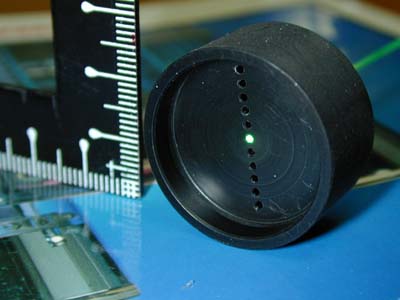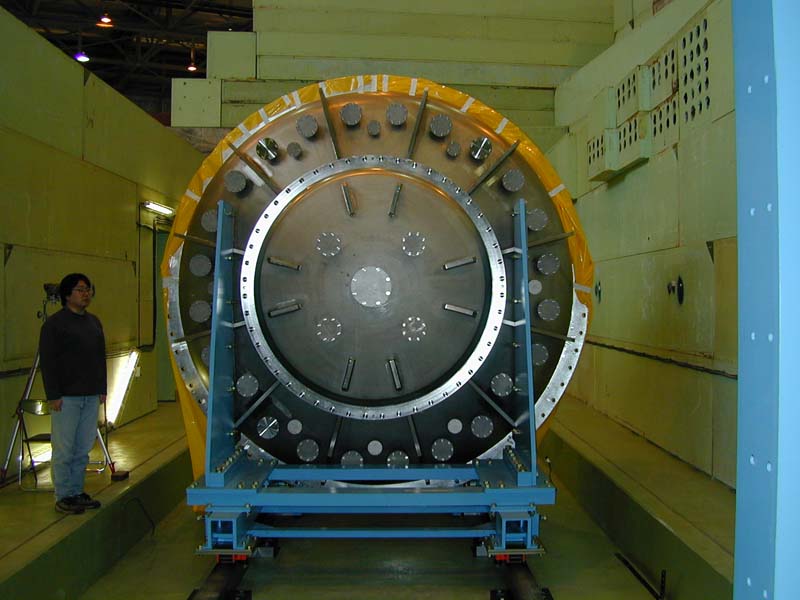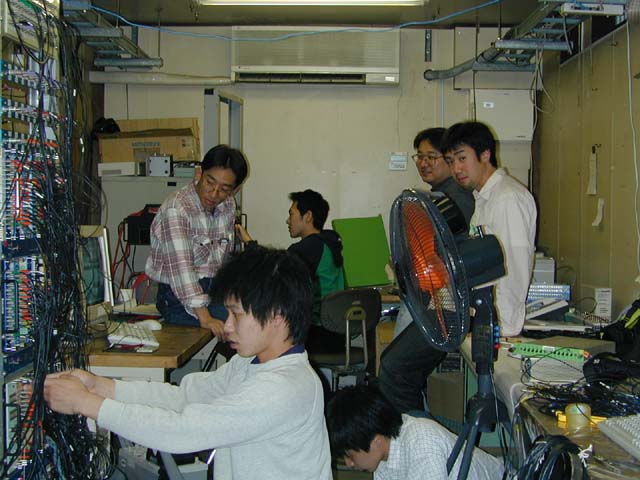 About us
About us
 About us
About us
| Staff | ||
| Takahiro Iwata (Professor) | [Home] | [Mail] |
| Yoshiyuki Miyachi (Professor) | [Home] | [Mail] |
| Hiroshi Yoshida (Professor, Institure of Art and Science; Networking and Computing Service Center) | [Home] | [Mail] |
| Yasuhisa Tajima (Professor, Institute of Art and Science; Networking and Computing Service Center) | [Home] | [Mail] |
We have activities in experimental nuclear and particle physics around strong interaction and hadronic matter. The followings are our main experimantal projects.
The KL −> π0νν decay is a direct CP violation process. Since
the theoretical ambiguity due to the QCD correction is very small, a
measurement of the KL −> π0νν decay branching ratio is uniquely
valuable in a search for new physics through the unitarity triangle and
crucial for a profound understanding of the CP violation phenomena. A
series of experiments has been planned at KEK to measure the branching
ratio of KL −> π0νν; one is a kind of pilot experiment using
the present 12 GeV Proton Synchrotron(PS) and the second a high
sensitivity experiment using the J-Parc 50 GeV PS.
| 2002-2003FY | Construction |
| 2004-2006FY | Experimental Run at KEK |
| 2007-2010FY | Construction for J-Parc |
| 2011FY- | Experimental Run at 50 GeV PS |

An endcap part of the vacuum vessel
The whole detector system of KEK E391a is planned to be put
in the large vacuum chamber.

Young physicists of Yamagata Univ. in an experiment at KEK
- Study of Nucleon Spin Structure -
The origin of the nucleon spin may be quark spin, gluon spin and anglular momenta of them.
The SMC experiment at CERN and other related experiments have
revieled in the past 10 years that the contribution of the qurak
spin to the nucleon spin is small(20%).
The COMPASS experiment at CERN aims at studying the gluon
spin contribution. It is currently running at CERN
with the world largest polarized target
and the polarized muon beam at 200GeV.

Polarized Target and COMPASS spectrometer
An polarized target colored beige is seen in front of a spectrometer.
The spectrometer consists of magnets, cherenkov counters, calorimeters, drift chambers, and the other detectors and machines.
The Gerasimov-Drell-Hearn(GDH) sum rule is a foundamental sum rule which describes the relation between the anomalous magnetic moment of the nucleon and its helicity dependent photo-absorption crosssection. Although it was formulated in 1966, experimental verification has not been completed. The GDH-SP8 experiment intends to measure the helicity dependent photo-absorption crosssection using the highly polarized photon beam at a few GeV energies provided in the SPring-8 LEP facility and with a polarized target. A combination of the polarized photon beam and the polarized target allows various interesting experiments.

An experimantal setup for the (γ, η) reaction at LNS, Tohoku University.
Many CsI scintillation detectors surround a solid hydrogen target seen in the center.
 Back
Back